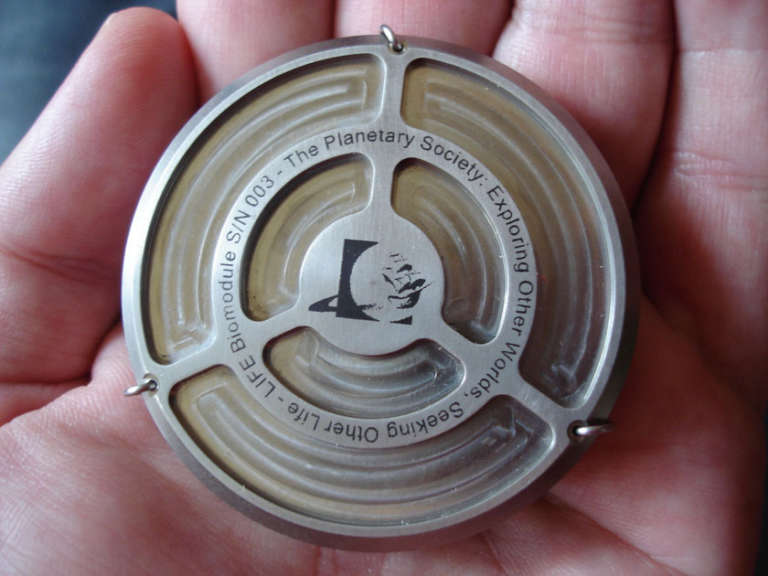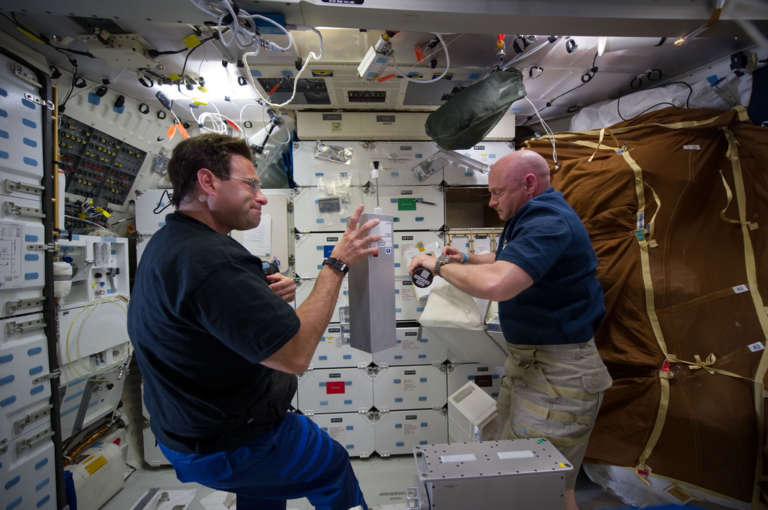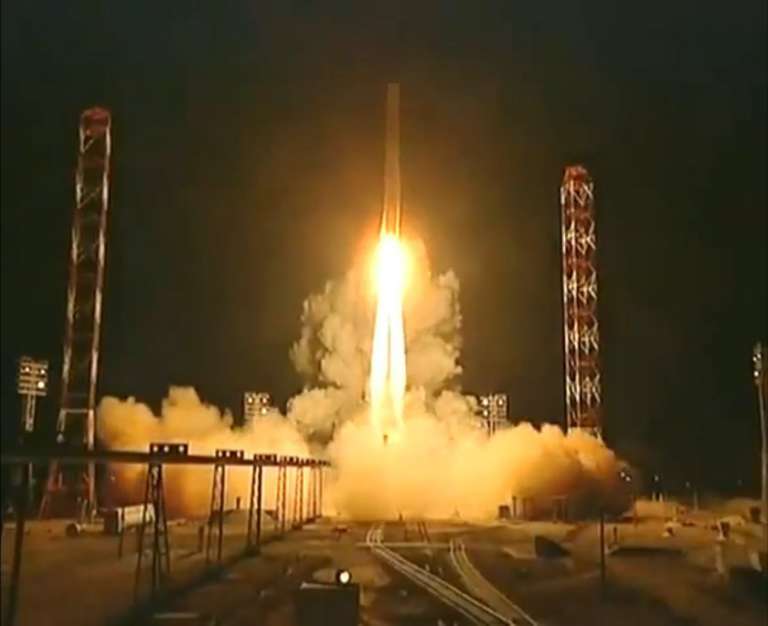LIFE Project
Can life survive within meteorites traveling through deep space?
At a Glance
- The Living Interplanetary Flight Experiment, or LIFE, was a Planetary Society project to investigate the potential for life to travel from planet to planet, naturally.
- The Planetary Society funded the development of a biomodule—essentially a simulated meteorite—to carry a selection of microorganisms to deep space and back.
- A proof-of-concept experiment flew aboard space shuttle Endeavour in 2011. The primary biomodule was destroyed along with its host spacecraft, Phobos-Grunt, shortly after launch in 2012.
The Living Interplanetary Flight Experiment, or LIFE, was a Planetary Society project to investigate the "transpermia" hypothesis: the potential for life to travel from planet to planet, safely ensconced inside rocks blasted from planetary surfaces by large impacts.
For example, if a rock on Earth contained life and were blasted off Earth, could it survive until it reached Mars? Or, if life once existed on Mars, could it have been transported to Earth? This project was designed to test the ability of life to survive a "natural" interplanetary voyage by flying organisms for several years through deep space with minimal protection and no life support.
LIFE was a small, flat cylinder about the size of a hockey puck containing a collection of microbes carefully selected and sealed before launch. In essence, it was a simulated space rock meant to be flown into deep space and back, subject to the same extreme conditions as a Martian meteoroid traveling to Earth.
The Shuttle LIFE capsule carried 6 microorganisms to space and back aboard the Space Shuttle Endeavour in 2011.
Phobos LIFE, which would have traveled to Mars's moon Phobos and back to Earth, failed along with its host spacecraft, the Russian-led Phobos-Grunt, shortly after its launch in 2011.

Phase One: Shuttle LIFE
LIFE first flew into space aboard Space Shuttle Endeavour during the shuttle's STS-134 mission in 2011. Shuttle LIFE tested the effects of low-Earth orbit spaceflight on 5 diverse species of microorganisms packed in tiny, heat-sealed, Delrin plastic sample tubes. Once the microbes were tested on Earth, they were meant to provide a baseline comparison and dress rehearsal for the next phase of the flight: Phobos LIFE.
The organisms flown were:
- Water Bears (Tardigrades). Members of the animal kingdom, the Water Bears are "huge" microorganisms compared to the other LIFE travelers. Their bodies are composed of four segments, each with two legs ending in claws. Water bears are extremophiles, which means they can adapt to some pretty hostile environments -- from 150 degrees Celsius (302 Fahrenheit or hot enough to bake biscotti) to just a few degrees above absolute zero. Plus, they're radiation-resistant.
- Deinococcus radiodurans. A hardy strain of bacteria. Whereas 10 Gy (Grays) of radiation would kill an average human, Deinococcus radiodurans can survive a whopping 5000 (five thousand) Gy. That's an ideal trait for long journeys through the dangerous radiation of outer space.
- Bacillus subtilis. A standard bacteria used over and over again in many different biological experiments. The MW01 strain was selected for Shuttle LIFE. Bacillus subtilis is also quite radiation resistant and has a long history of space biology missions, going back to the days of Apollo.
- Haloarcula marismortui. An archaeons extremophile that thrives under conditions that destroy many other organisms. Haloarcula marismortui lives in extremely salty environments, which could share properties with bodies of water in Mars' ancient past.
- Pyrococcus furiosus. An extremophile that loves heat. Pyrococcus furiosus was discovered in 1986 in volcanically heated ocean sediments off the coast of Italy, and it thrives in temperatures between 70 and over 100 degrees Celsius (158 and 212 degrees Fahrenheit). Pyrococcus furiosus served as a temperature control. If it was the only LIFE organism to survive the trip, it would have indicated that overheating, rather than conditions in space, caused the loss of the other organisms.

Phase 2: Phobos LIFE
The Phobos LIFE biomodule contained 10 different organisms, representing all three domains of life, and one soil sample. The organisms are all very well characterized, most with sequenced genomes. Most are extremophiles, and most have flown in low Earth orbit. Upon return from space, the health and characteristics of organisms were to have been compared with an unopened control sample that remained on Earth.
In November 2011, the LIFE biomodule launched along with Phobos-Grunt on what was planned to have been a 34-month voyage to Mars' moon Phobos and back. Although the spacecraft reached Earth orbit, its second-stage thrusters failed to fire, leaving it unable to depart for Mars. The spacecraft eventually reentered Earth's atmosphere and was destroyed, along with the Phobos LIFE experiment.

Asteroid Redirect Mission
NASA in 2014 selected LIFE to fly aboard the Asteroid Redirect Mission, which would have sent a spacecraft to visit a near-Earth asteroid, grab a small boulder, and return it to lunar space. There, the boulder would be visited by astronauts, who would also collect the LIFE biomodule. The Asteroid Redirect Mission was canceled in 2017. This was the final attempt at flying the LIFE experiment.
Phobos LIFE Team and Partners
Management
- Bruce Betts, Experiment Manager, The Planetary Society
- Louis Friedman, The Planetary Society
Science Team
- David Warmflash, Principal Investigator, U.S.
- George Fox, University of Houston, U.S.
- Neva Ciftcioglu, Independent, Turkey
- K. Ingemar Jönsson, Kristianstad University, Sweden
- Joseph Kirschvinck, University of Kyoto, Japan, Caltech, U.S.
- David McKay, NASA-JSC, U.S.
- Cody Nash, Caltech, U.S.
- Elena Vorobyova, Moscow State University, Russia
- Alexander Zakharov, Space Research Institute, Moscow, Russia
ATCC Team
- Tim Lilburn
- Amy Smith
DLR Team (Germany)
- Petra Rettberg (Team Lead)
- Elke Rabbow
- Ralf Möller
- Marko Waßmann
- Thomas Berger
- Gerda Horneck
- Günther Reitz
Engineering Team
- Bud Fraze, Stellar Explorations Inc.
- Tomas Svitek, Stellar Explorations Inc.
Science & Technology
Our Science & Technology program invests in innovative science and technology to propel advancements in space science and exploration.


 Explore Worlds
Explore Worlds Find Life
Find Life Defend Earth
Defend Earth


